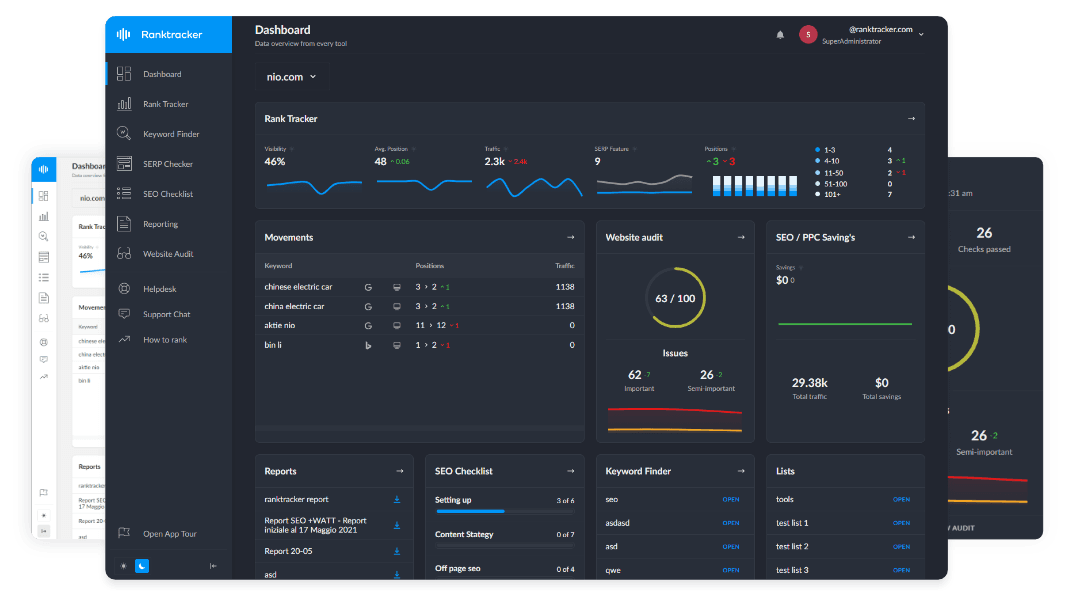Intro
Building a successful e-commerce business isn’t just about listing products and hoping customers will find them. Without a strong SEO strategy, your store risks getting lost in the crowded digital marketplace. Search engine optimization (SEO) is what drives organic traffic, enhances visibility, and ultimately boosts sales.
Why SEO Matters for E-Commerce
Unlike paid ads, which stop delivering traffic once your budget runs out, SEO is a long-term investment that keeps bringing in potential customers. Here’s why it’s essential:
- Higher search rankings – The better your products rank, the more exposure they get.
- Enhanced user experience – A well-structured website improves navigation and keeps shoppers engaged.
- Stronger brand trust – Sites that rank higher are seen as more credible and reliable.
- Increased sales – More targeted organic traffic means better conversion rates.
- Lower marketing costs – Strong SEO reduces reliance on expensive advertising campaigns.
If you want your e-commerce business to thrive, investing in SEO is non-negotiable.
How to Structure an SEO-Friendly E-Commerce Website
A well-optimized website ensures both search engines and users can navigate it easily. Enhance your site’s SEO and user experience with an integrated e-commerce platform to streamline essential optimization features within a single system. These platforms ensure fast loading speeds, mobile responsiveness, and structured data for better indexing.
Additionally, integrated user experience (UX) features, like intuitive navigation, seamless checkout processes, and AI-driven search functions, create a smoother shopping experience, reducing bounce rates and increasing conversions.
By centralizing content management, analytics, and performance tracking, an e-commerce platform enables businesses to make data-driven improvements, ensuring their site remains competitive, discoverable, and user-friendly.
Here’s how to structure your site for maximum SEO benefits:
1. Organize Your Site for Easy Navigation
- Ensure every page is accessible within 2-3 clicks from the homepage.
- Use clear product categories and subcategories.
- Implement breadcrumb navigation to guide users and search engines.
2. Optimize URLs for SEO
- Keep URLs short and keyword-rich (e.g.,
example.com/women-running-shoes). - Avoid special characters, long ID numbers, or unnecessary parameters.
3. Improve Internal Linking
- Link related products and categories to encourage deeper browsing.
- Ensure no orphan pages (pages that don’t have any internal links pointing to them).
4. Mobile Optimization is a Must
- A mobile-friendly e-commerce website ranks higher in Google’s mobile-first index.
- Optimize page speed and ensure smooth navigation on all devices.
The Impact of Content Marketing on E-Commerce Visibility
Content marketing goes beyond simple product descriptions; it drives traffic, improves engagement, and increases conversions.
1. Unique, High-Quality Product Descriptions
- Avoid generic manufacturer descriptions—Google favors original content.
- Highlight key benefits, features, and use cases to improve rankings.
2. Blogging for SEO and Customer Engagement
- Write helpful blog posts related to your products to attract organic traffic.
- Answer common customer questions with how-to guides and product comparisons.
3. Leverage User-Generated Content
- Encourage reviews and testimonials—this fresh content helps with rankings.
- Implement Q&A sections on product pages to address common concerns.
4. Use Videos and Images Strategically
- Product demo videos increase engagement and SEO value.
- Optimize images with descriptive alt text to improve accessibility and rankings.
Technical SEO Considerations for Your E-Commerce Business
Technical SEO ensures your website is easy for search engines to crawl and index. Here’s what you need to focus on:
1. Site Speed and Performance
- Compress images and enable lazy loading.
- Use a Content Delivery Network (CDN) to load pages faster worldwide.
- Minimize unnecessary scripts and plugins.
2. Implement Schema Markup
- Add structured data to directly display prices, reviews, and product availability in search results.
- Rich snippets improve click-through rates and drive more traffic.
3. Prevent Duplicate Content Issues
- Use canonical tags to avoid problems with product variations.
- Ensure each page has unique content to avoid SEO penalties.
4. Secure Your Site with HTTPS
- Google prioritizes secure websites, so make sure your e-commerce website runs on HTTPS.
- Update all internal links and redirects to use the secure version of your site.
5. Regularly Fix Broken Links and Redirects
- Scan your site for broken links and 404 errors.
- Implement 301 redirects to maintain link equity when pages are removed or updated.
6. Submit an XML Sitemap
- Ensure Google and other search engines can easily index your website.
- Use a robots.txt file to control which pages search engines can crawl.
Measuring Success with Ranktracker’s SEO Tools
You need to track and optimize your SEO strategy to ensure your e-commerce website continues to perform well. Ranktracker provides essential tools to help:
1. Rank Tracker
- Monitor keyword rankings for product and category pages.
- Identify opportunities to optimize underperforming pages.
2. Keyword Finder
- Discover high-traffic keywords to use in product descriptions and content.
- Analyze search trends and competition for better targeting.
3. SERP Checker
- Analyze competitor rankings and refine your strategy accordingly.
- Gain insights into keyword difficulty and ranking factors.
4. Web Audit
- Identify technical SEO issues that may be affecting visibility.
- Get actionable recommendations for fixing errors.
5. Backlink Checker & Monitor
- Evaluate the quality of backlinks pointing to your store.
- Discover new link-building opportunities to improve domain authority.
6. SEO Checklist
- Follow a step-by-step guide to ensure your store is fully optimized.
- Cover on-page, technical, and content-based SEO best practices.
By leveraging Ranktracker’s tools, your e-commerce website can stay ahead of the competition and continuously improve its search performance.

